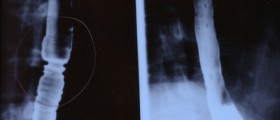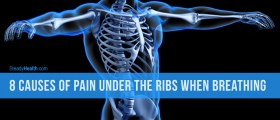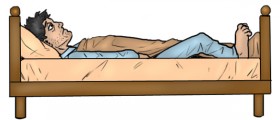
Muscle spasms are also known as leg cramps and these can affect part of the leg below and behind the knee, as well as calf muscles and small muscles located in the feet. This unpleasant condition may last just for several seconds or minutes and some people experienced leg cramps that lasted for some 10 minutes. It can be just unpleasant or very painful, depending on the situation, cause and the patient. After the cramps, muscle can be tender for quite some time. Some people have problems with muscle cramps during nighttime, which may affect their sleep.
Occasional leg cramp can happen to anyone, but elderly have more frequent muscle cramps. About 30% of people over 60 year of age and more than 50% of patients older than 80 years have very frequent muscle cramps in the legs. These patients may have several leg cramps during the week or suffer from this problem every day.
Calve Cramps Causes
Usually, there is no known cause of the calf cramp. This condition is also called idiopathic leg cramp and doctors still theorize what can lead to this problem. One possible explanation is that the muscle in shortened position tends to contract even further and thus leads to muscle spasms. This could clarify why some people have leg cramps while they are asleep. Natural position of the body is to sleep relaxed, which means that our knees are bent and the feet are pointing downwards. Although the whole body is relaxed, calf muscles are shortened in this situation and this could provoke leg cramps in some people.
Additionally, calve cramps may also indicate another problem happening in the body. Muscle overuse (too much exercise), dehydration, excess use of alcohol, untreated underactive thyroid gland and electrolyte imbalance in the blood are all known as possible secondary causes of calf cramps. Pregnancy, especially in second and third trimester may also provoke some leg cramps.
Condition such as: peripheral vascular disease, uncommon nerve disorders, lead poisoning, sarcoidosis or liver cirrhosis, as well as some kidney dialysis may lead to similar problems. If a person uses medications such as diuretics, nicotinic acid, bifedipine, salbutamol, terbutaline, statins, cimetidine, phenotiazines, clofibrate, lithium or penicillamine there are chances he or she might have leg cramps as a side effect of these drugs. Some of these medication are also associated with frequent occurrence of calf cramps.
What’s the Treatment?
Occasional cramps in the legs don’t have to be treated and they resolve on their own in no time. Frequent calf cramps, on the other hand may be prevented, but you have to consult your doctor about the cause and solutions for your problem.
Painkillers may be useful for patients suffering from discomfort after calf cramps. Stretching exercises and proper posture while sleeping may be very helpful for anyone suffering from severe leg cramps. Other treatment options could include the use of different supplements or medications to resolve this problem. Magnesium and vitamin B complex, as well as some medications such as quinine, diltiazem, verapamil, orphendarine and naftidrofuryl are some that might be recommended and prescribed by your doctor after physical exam and different tests.

















Your thoughts on this
Loading...